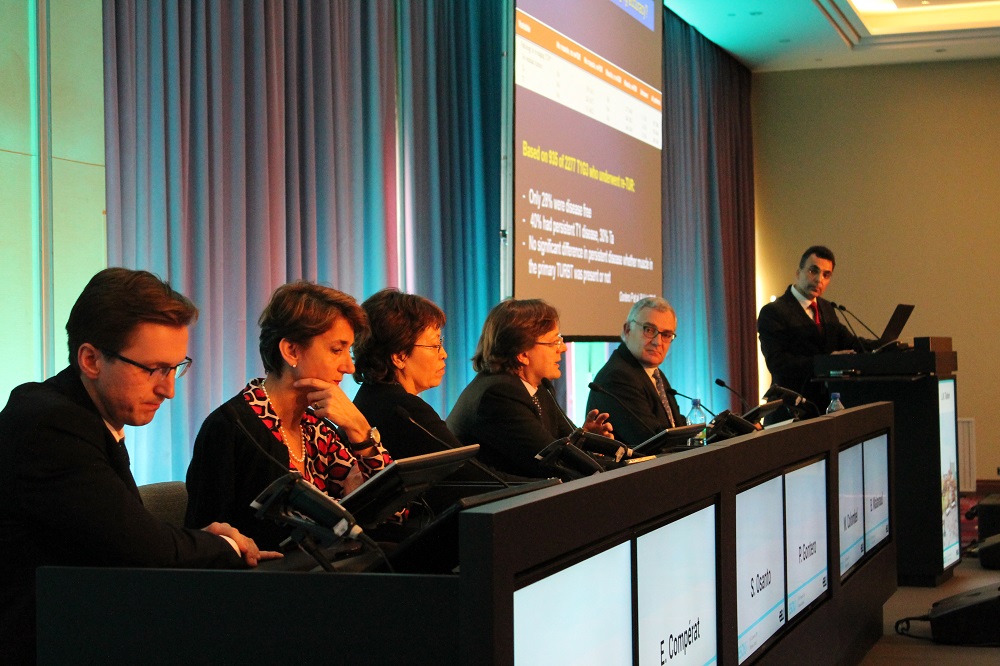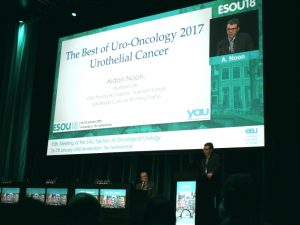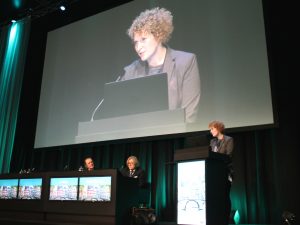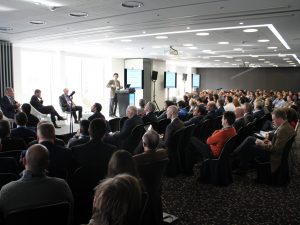One of the overarching themes of the second day of ESOU16 was multidisciplinarity. Delegates started the day with the second session devoted to prostate cancer, which is by far the most-covered topic in the three days of the 13th ESOU meeting in Warsaw.
There was a distinct shift in audience attendance when the session on testis and penile cancer began. Asst. Prof. Govorov, who co-chaired the session explains: “I think the audience is honest. A large portion would say: ‘We do not treat patients with penile or testis cancer, we don’t have the expertise and would rather refer them.’ The large majority of the audience that stayed did participate in this session, which I thought was a particularly interesting one. I must compliment the ESOU board and scientific committee on their choices.”
The session featured an update of testis cancer guidelines by Prof. Jablonowski, and a lecture on the importance (especially for the patient’s quality of life) of penile sparing treatment by co-chair Dr. Protzel. It finished with an in-depth look at neo-adjuvant vs adjuvant systemic chemotherapy for penile cancer patients with bulky inguinal adenopathy by medical oncologist Dr. Andrea Necchi.
“He presented data that the urologist would normally never see,” explained Govorov. “It would be my dream to have a medical oncologist like Andrea at my disposal to confer with and get advice from. We need close collaboration.”
An “MDT” discussion
The following session on urothelial cancer raised a lot of discussion, particularly the deliberately provocative “Challenging the EAU Guidelines” debate on the administering of neo-adjuvant chemotherapy for muscle-invasive bladder cancer and a topical talk by Prof. Joan Palou about alternative treatments for non-muscle invasive bladder cancer in an era of BCG shortage.
The final part of that session consisted of a multidisciplinary panel discussion featuring Profs. Compérat, Gontero and Osanto and Dr. Nyk. The case discussion was led by Profs. Malavaud and Türkeri and featured a real-life patient with high-risk urothelial cancer. Each speaker had unique considerations when posed with the patient’s symptoms and preliminary examinations.
“Even in the simplest case you will see a difference of opinion between experts,” Prof. Türkeri explained afterwards. “The audience can learn a lot from sessions like this, and apply the lessons to best fit their environments, hospitals and of course specific cases.”
When asked what urologists (the majority of the audience) could learn from an oncologist like Prof. Osanto, Türkeri pointed to their systemic perspective and, often, approach. “Urologists are still more focused on local and regional treatment. We need to learn to combine, as adding chemotherapy before or after surgery can make a real difference for the patient.”
“In this case, Prof. Osanto proposed surgery much sooner than the rest of the panel, she was not as optimistic in the chances of the patient.” Prof. Malavaud closed the panel discussion on the topic of patient compliance. In this case, the patient declined certain treatment options and succumbed to the effects of his urothelial cancer.
Türkeri: “At the end of the day, the patient decides and as a urologist we cannot force them to undergo treatment. This patient declined a lot of offers of treatment and chose a path that led to his death. This is always difficult for a urologist to deal with. One of the important messages here is that urologists need a better understanding of their patients, and get their message across better. The patient should understand the risks without hurt feelings or fear. We need to be better communicators, both personally and in terms of patient education.”





